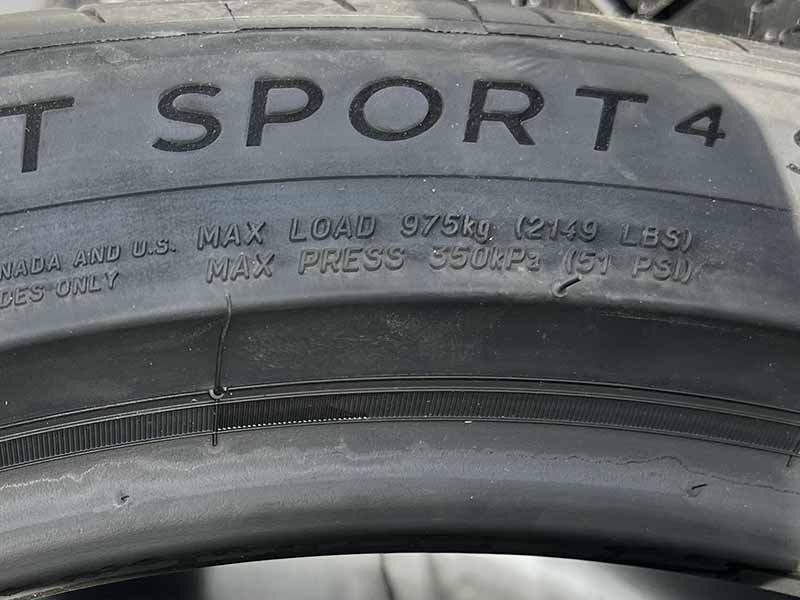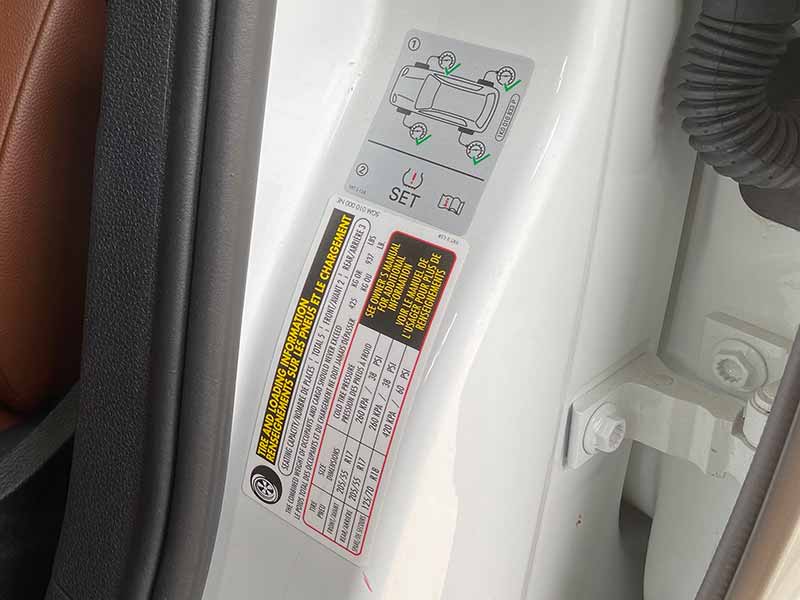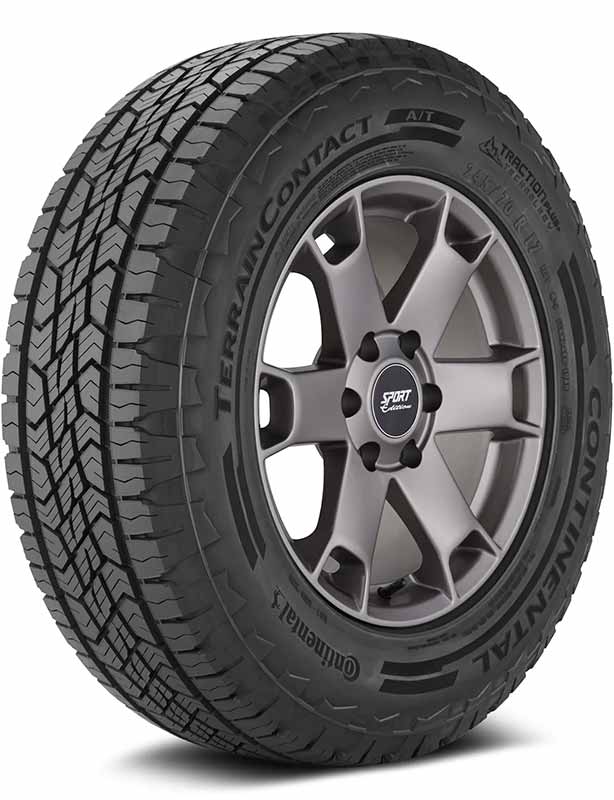The world of tires is vast and intricate, with numerous terms and classifications that can sometimes be overwhelming. If you’ve ever found yourself puzzled by the term “SL Load Range” while browsing for tires, you’re not alone. It’s a term that holds significant importance in the realm of tire safety and performance.
What does SL Load Range mean?
SL Load Range refers to the classification of tires designed to operate at a standard load pressure, typically suitable for most passenger vehicles. It indicates the maximum weight the tire can safely support when properly inflated.
In this article, we’ll delve deep into the nuances of the SL Load Range, comparing it with other load ranges, understanding its significance, and offering practical insights for vehicle owners. From tire basics to real-world examples, we aim to provide a comprehensive guide to help you navigate the intricacies of tire load ranges with confidence.

Light Truck Tires vs. Passenger Tires
When it comes to choosing the right tire for your vehicle, understanding the difference between light truck tires and passenger tires is crucial. Both types have their unique characteristics and are designed for specific vehicle categories and driving conditions.
- Light Truck Tires: These are primarily designed for vehicles that carry heavy loads or tow large trailers. They have a sturdier build and can handle more weight compared to passenger tires. Commonly seen on pickup trucks, SUVs, and commercial vehicles.
- Passenger Tires: Ideal for everyday vehicles like sedans, hatchbacks, and some smaller SUVs. They offer a smoother ride and are optimized for comfort and fuel efficiency.
Did You Know? The term “light truck” can be a bit misleading. It doesn’t necessarily mean the truck is “light” in weight. Instead, it refers to the purpose and capacity of the tire.
Choosing the right type of tire is not just about the vehicle you drive but also about your driving habits, the conditions you often drive in, and the loads you typically carry. For instance, if you’re someone who frequently goes on off-road adventures or carries heavy equipment, light truck tires might be more suitable for you. On the other hand, if your daily commute involves city driving with minimal load, passenger tires would be a better fit.

The Role of Load Capacity in Tires
Every tire comes with a specific load capacity, which essentially tells you the maximum weight the tire can safely support. This is a vital aspect to consider, especially when thinking about the safety and performance of your vehicle.
- Definition and Importance: Load capacity is determined by the tire’s construction, materials used, and its size. It’s crucial for ensuring that the tire doesn’t get overloaded, which can lead to premature wear, blowouts, or even accidents.
- Relation to Vehicle Performance: A tire’s load capacity can influence how your vehicle handles, especially when cornering, braking, or accelerating. Overloading a tire can compromise its performance and may even affect fuel efficiency.
- Safety Considerations: Always ensure that the tires you choose can handle the maximum load of your vehicle. This is especially important if you frequently carry heavy loads or passengers.
For a deeper dive into the intricacies of tire load capacities and how they relate to different load ranges, check out our detailed guide on tire load index.
Decoding the Load Range
Understanding the load range of a tire is paramount for vehicle safety and optimal performance. It provides insights into the tire’s ability to carry a specified amount of load at a given pressure. Let’s delve deeper into what load range means and its various classifications.
What is Load Range?
Load range, often found on a tire’s sidewall, indicates the tire’s load-carrying capabilities and its inflation limits. It’s a representation of the tire’s strength and robustness.
- Significance: The load range ensures that tires are used within their safe limits. Using a tire beyond its specified load range can lead to tire failure or reduced lifespan.
- Different Load Ranges: Tires come in various load ranges, from standard load (SL) to extra load (XL) and even more specific categories for light trucks and commercial vehicles.
SL Tires: Standard Load Tires
SL, or Standard Load tires, are designed to operate at a standard load pressure. They are commonly used in passenger vehicles and are optimized for comfort and efficiency.
- Characteristics: SL tires typically have a maximum load pressure of 35 psi. They offer a balanced performance for everyday driving conditions.
- Benefits: These tires provide a comfortable ride, good fuel efficiency, and are generally more affordable than specialized tires.
XL Tires: Extra Load Tires
XL, or Extra Load tires, as the name suggests, are designed to carry heavier loads compared to SL tires. They have a higher load capacity and can operate at a higher inflation pressure.
- Differences from Standard Load: XL tires can handle a maximum load pressure of 41 psi or more, allowing them to support additional weight.
- Ideal Scenarios: If you frequently carry heavy cargo, travel with multiple passengers, or drive in demanding conditions, XL tires might be the right choice for you.
For a comprehensive comparison between XL and other load ranges, you might want to explore our detailed article on XL vs. E load range.

Diving Deeper into Load Range SL
The SL Load Range is a pivotal classification in the world of tires. It’s essential for vehicle owners to grasp its meaning and implications fully. In this section, we’ll explore the intricacies of Load Range SL and how it stands out from other load ranges.
Meaning and Specifications
Load Range SL, or Standard Load, is a designation used primarily for passenger tires. It signifies that the tire is designed to operate at a standard load pressure, ensuring optimal performance and safety.
- Definition: SL tires are crafted to handle a maximum load pressure of 35 psi. They are optimized for vehicles that don’t frequently carry heavy loads or tow large trailers.
- Importance: Understanding the meaning of SL is crucial for ensuring that you’re using the right tire for your vehicle and driving conditions. Using the wrong load range can compromise safety and tire longevity.
Comparing SL with Other Load Ranges
While SL is a common load range for many passenger vehicles, there are several other load ranges available, each with its unique specifications and use cases.
- Light Load vs. Standard Load: Light load tires are designed for vehicles that carry lighter loads. They can operate at lower inflation pressures compared to SL tires.
- Extra Load (XL) Tires: As discussed earlier, XL tires can handle more weight than SL tires, making them suitable for vehicles that frequently carry heavy loads or more passengers.
- Other Load Ranges: Beyond SL and XL, there are several other load ranges, especially for light trucks and commercial vehicles. Each has its specifications and is designed for specific vehicle types and driving conditions.
Expert Insight: Always ensure that the load range of your tire matches the requirements of your vehicle. This not only ensures optimal performance but also enhances safety.
Real-world Examples
To better understand the concept of Load Range SL, let’s consider a few real-world scenarios:
- Family Sedans and Hatchbacks: Most family cars, like sedans and hatchbacks, come equipped with SL tires. These vehicles typically don’t carry heavy loads, making SL tires the ideal choice.
- Small SUVs: While some small SUVs can operate efficiently with SL tires, others might require a higher load range, especially if they are frequently loaded with cargo or passengers.
- Performance Cars: Many performance or sports cars use SL tires. These vehicles prioritize speed and agility over load-carrying capacity.

Tire Load Ratings and Index
Tire load ratings and the load index are integral components in the realm of tire specifications. They provide vehicle owners with essential information about the weight a tire can safely support. In this section, we’ll delve into the nuances of these terms and their significance.
Understanding Tire Load Ratings
Tire load ratings offer a clear indication of the maximum weight a tire can handle when properly inflated. It’s a crucial metric that ensures the safety and optimal performance of your vehicle.
- What They Indicate: Load ratings provide a numerical representation of a tire’s load-carrying capacity. The higher the number, the more weight the tire can support.
- Why They Matter: Selecting a tire with an appropriate load rating is vital. A tire with a lower load rating than required can lead to premature wear, reduced fuel efficiency, and even potential blowouts.
The Load Index: A Crucial Number
The load index is a standardized number that corresponds to the maximum weight a tire can support. It’s typically found alongside the speed rating on a tire’s sidewall.
- Decoding the Number: Each load index number corresponds to a specific weight. For instance, a load index of 91 might indicate a maximum weight of 615 kg per tire.
- Relation to Load Capacity: The load index offers a more precise way to determine a tire’s load capacity. It’s essential to ensure that the load index matches or exceeds the requirements of your vehicle.
- Choosing the Right Load Index: Always refer to your vehicle’s manual or consult a tire expert to determine the appropriate load index for your needs. This ensures compatibility, safety, and optimal performance.
Tip: While the load index provides a clear indication of a tire’s load-carrying capacity, it’s equally important to consider other factors like driving conditions, vehicle type, and individual driving habits.

Practical Insights for Vehicle Owners
Choosing the right tire for your vehicle goes beyond understanding technical specifications. It’s about making informed decisions that enhance safety, performance, and the overall driving experience. In this section, we’ll provide practical insights and tips for vehicle owners to navigate the world of tires with confidence.
Tips for Choosing the Right Tire Load Range
Selecting the appropriate tire load range is crucial for ensuring optimal vehicle performance and safety. Here are some practical tips to guide your decision:
- Know Your Vehicle’s Requirements: Always refer to your vehicle’s manual to determine the recommended load range. This ensures compatibility and safety.
- Consider Your Driving Habits: If you frequently carry heavy cargo or passengers, you might need a tire with a higher load range.
- Seek Expert Advice: When in doubt, consult a tire expert or technician. They can provide personalized recommendations based on your specific needs.
Misconceptions about Load Ranges
Misinformation can lead to poor tire choices. Let’s debunk some common myths about load ranges:
- Higher Load Range Equals Better Performance: Not necessarily. While a higher load range means the tire can support more weight, it might not be suitable for all vehicles or driving conditions.
- All Vehicles Need the Same Load Range: Different vehicles have different requirements. A compact sedan and a large SUV will likely need tires with different load ranges.
- Load Range Doesn’t Affect Fuel Efficiency: Incorrect. Using the wrong load range can lead to increased rolling resistance, impacting fuel efficiency.
Real-world Examples
To further illustrate the importance of choosing the right load range, let’s consider some real-world scenarios:
- City Commuter: Jane drives a compact sedan and primarily uses it for city commuting. She rarely carries heavy loads. For her, SL (Standard Load) tires are ideal.
- Adventure Enthusiast: Mike owns an SUV and frequently goes on off-road adventures. He often carries camping gear and equipment. In his case, a higher load range tire, like XL, would be more suitable.
- Family Road Trips: The Smiths love road trips. They own a minivan and often travel with luggage and camping gear. They need tires that can handle the extra weight, making a higher load range essential.
Resources
Below are some links you may find helpful when learning about tires:
- SL Vs XL Load Range Tires: Which One Is The Best For What? – Drive Now Automotive
- Load Range SL – What Does It Mean? – Road Sumo
- Load Range SL vs. E: What’s The Best For Worry-Free Riding? – MotorAudit
Final Thoughts
Understanding the intricacies of tire load ranges, especially the SL Load Range, is crucial for vehicle owners. It not only ensures the safety and performance of your vehicle but also helps in making informed decisions when purchasing new tires.
With the knowledge gained from this article, you can confidently select the right tire for your vehicle, ensuring optimal performance and safety on the road. Remember, always consult your vehicle’s manufacturer recommendations and consider the specific needs of your vehicle when choosing tires.
Good luck and happy motoring.




